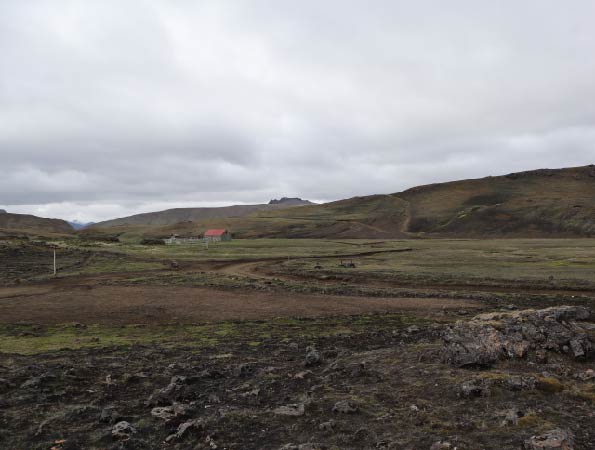
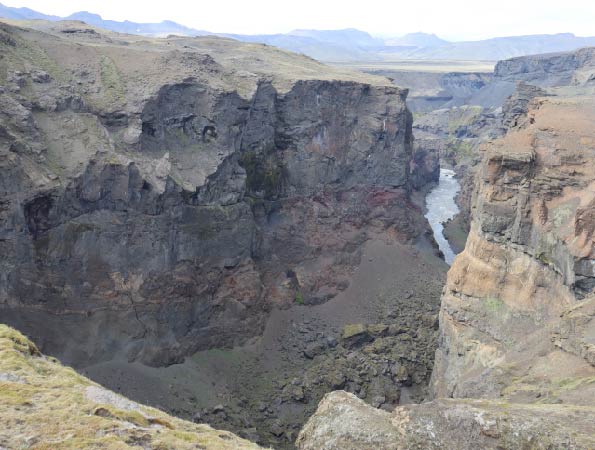
If you have never been to Iceland before but are interested in getting to know the country better, you can view a short introduction. It briefly discusses, among other things, which places, and natural wonders are fascinating to visit and explore and which exciting activities you can do. It also outlines where to stay and what time of year is best to visit Iceland. You can look closely at the content by activating the links below.
Volcanism, geothermal energy, and unique nature
Vegetation, glaciers, rivers, and waterfalls
Geothermal heat
Weather
Bad weather can change your travel plans
Weather warnings from the Icelandic Met Office
Natural events can affect travel plans
Wild animals
Industry
Activities to do
Accommodation and restaurants
Necessary luggage that you must take with you
Tourists who have visited Iceland
After the trip has started, unforeseen events of varying severity can occur, such as illness, accident, or natural events. You can contact the Emergency line 112 and ask for help if needed. It is important to respond correctly to reduce risk and prevent more damage than has been done. The Emergency line guides the caller and calls the police if necessary.
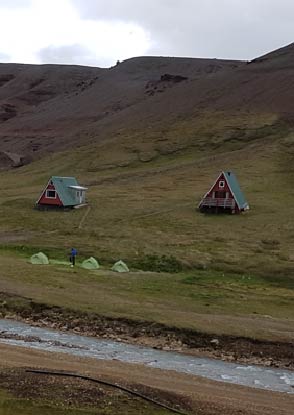
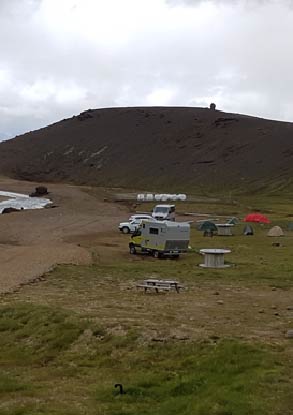
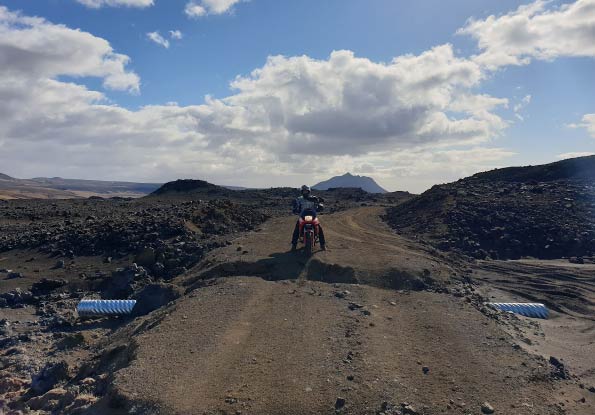
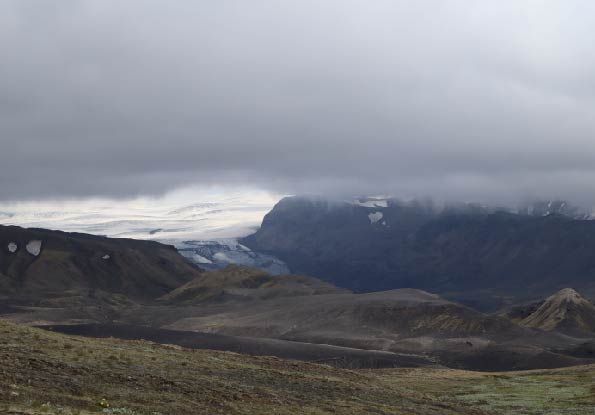
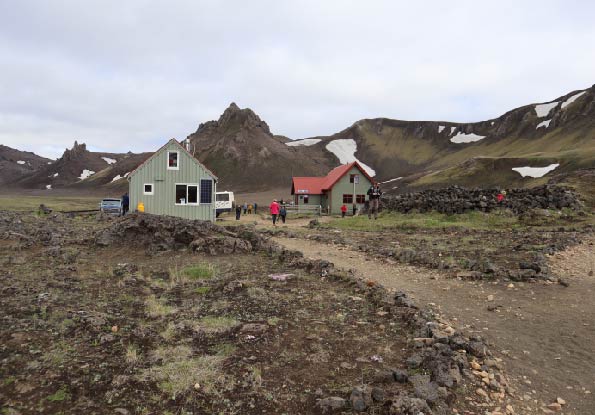
Volcanism, geothermal energy, and unique nature
Iceland is an island in the North Atlantic Ocean known for its volcanism, geothermal energy, and unique nature. Its landscape is spectacular and mostly untouched by wilderness and highlands.
There are many mountains and fjords. The atmosphere is clean, and the cold water is suitable for drinking without purification.
Iceland is a republic with a parliamentary government. Iceland is 103 thousand square kilometers in area. About 390 thousand people live in Iceland, and 17% are foreigners. Most of the people live in the southwestern part. The capital is Reykjavík, with 134 thousand people. The largest town in the countryside is Akureyri, where 20 thousand people live. There are four international airports: Akureyri, Egilsstaðir, Keflavík, and Reykjavík. Keflavík has the most air traffic. Many airlines fly to and from Iceland. There are thirteen domestic airports.
There are 59 fishing ports, and they are in fishing villages around the country. The Port of Reykjavík is the largest, and oversized cargo and passenger ships can dock there. There are three national parks: Þingvellir National Park, Snæfellsjökull National Park, and Vatnajökull National Park, and it is the largest.
The Mid-Atlantic Ridge runs through Iceland. It is divided into two crustal plates, the North American Plate and the Eurasian Plate, which drift slightly and steadily away from each other.
The currency is the Icelandic krona, and the language is Icelandic. The clock is set according to Greenwich Mean Time.
Iceland is not a member of the European Union (EU). Iceland is a member of the Schengen Agreement. Citizens of the Schengen countries do not need a visa to visit Iceland.
Citizens from countries without a visa (visa-free countries such as the United States of America, United Kingdom, Canada, Israel, and Japan) need an ETIAS authorization (European Travel Information and Authorization System) before visiting Iceland. These citizens can stay as tourists in Iceland for 90 days without a visa. Citizens from other countries need a visa before visiting Iceland.
Vegetation, glaciers, rivers, and waterfalls
Only a small part of Iceland is covered with vegetation. The lowlands are rather well-vegetated, but the wilderness and highlands mainly lack vegetation.
Roughly 10% of Iceland's area is covered by glaciers. There are nine glaciers they are Snæfellsjökull, Drangajökull, Eiríksjökull, Langjökull, Hofsjökull, Tungnafellsjökull, Vatnajökull, Mýrdalsjökull and Eyjafjallajökull. Vatnajokull is the largest. Glaciers store much fresh water, and all main rivers have their source in glaciers. Dettifoss is the largest waterfall in Jökulsá á Fjöllum, which originates in Vatnajökull. Other well-known waterfalls are such as Gullfoss in Hvítá, Godafoss in Skjálfandafljót, Seljalandsfoss in Seljalandsá, Skógafoss in Skógá, Hraunfossar come through Hallmundarhraun and flow into Hvítá and Aldeyjarfoss in Skjálfandafljót. These waterfalls are popular tourist destinations.
Other well-known natural wonders that have great attraction for tourists are such as Reynisfjara, Jökulsárlón, Dimmuborgir, Herðubreiðarlindir, Stuðlagil, Markafljótsgljúfur, Látrabjarg, Ásbyrgi, Básar, Hrafntinnusker, Emstrur, Hvítserkur, Þórsmörk and Básar, to name a few. Many tourists visit these places every year.
Geothermal heat
There are many geothermal areas in Iceland. You must walk carefully on the surface of a geothermal area because the water is boiling and can burn your skin if the hot water touches the skin. The surfaces of geothermal areas are sensitive, so you must be careful when walking on the surface so that the geothermal areas are not disturbed.
Hot water is intended for heating houses and bathing and usually comes from low-temperature areas. It can be very hot and is not intended for drinking. When hot water is used for bathing, you must mix it with cold water; otherwise, the temperature will be too high and can burn your skin.
There are many natural geothermal pools. Some are where you can take a bath and relax. The best-known natural geothermal pools are in Landmannalaugar and Hveravellir, both in beautiful highland surroundings.
There are many outdoor pools where you can bathe and relax. At Langisandur in Akranes, a heated pool (Guðlaug) is on the beach. Ylströnd in Nauthólsvík in Reykjavík a heated pool is on the beach.
There are many heated swimming pools throughout the country where you can shower, swim, and relax. Swimming pools are in Reykjavík, Mosfellsbær, Álftanes, Selfoss, Vestmannaeyjar, Dalvík, Hofsós, and Egilsstaðir, to name a few.
There are several hot springs. Deildartunguhver in Borgarfjörður is the wateriest hot spring in Europe, with a temperature of around 100°.
The Haukadalur Geysir is one of the most famous geyser in the world. However, Strokkur in Haukadalur erupts nonstop; usually, only a few minutes pass between eruptions.
Weather
The Gulf Stream surrounding Iceland is warm and makes the climate relatively mild. The air temperature gets quite low in the winter, and the weather gets very cold. The weather can affect travel, especially in the winter, so it is necessary to change the travel plan as it is impossible to visit specific tourist destinations due to bad weather or lack of access. Choosing a travel time with the least risk of weather disrupting the journey would be best. Summer is bright all day, but the daylight is much shorter in winter, spring, and autumn. The shortest day is December 21; daylight is just over 4 hours.
The average air temperature by month in °C for 2022 is shown in the table from The Icelandic Met Office.
| Place | Jan | Feb | Mar | Apr | May | Jun | Jul | Agu | Sep | Okt | Nov | Dec |
| Reykjavík | 1,2 | -1,3 | 2,5 | 5,1 | 7,7 | 9,6 | 10,6 | 10,2 | 9,3 | 4,9 | 5,1 | -3,9 |
| Stykkishólmur | 0,2 | -1,8 | 1,0 | 4,0 | 5,7 | 8,7 | 10,5 | 10,1 | 8,8 | 4,6 | 4,6 | -2,7 |
| Bolungavík | -0,5 | -2,1 | 0,4 | 3,0 | 4,6 | 7,9 | 9,9 | 9,1 | 8,5 | 4,0 | 4,6 | -2,2 |
| Akureyri | 0,3 | -2,9 | 1,9 | 4,4 | 6,3 | 9,7 | 11,2 | 10,0 | 8,7 | 2,8 | 4,2 | -5,3 |
| Egilsstaðir | -0,1 | -3,7 | 1,9 | 3,2 | 5,7 | 9,6 | 10,4 | 10,2 | 8,9 | 3,3 | 4,3 | -5,9 |
| Höfn | 1,3 | -1,0 | 3,1 | 4,6 | 7,0 | 9,9 | 10,8 | 10,2 | 9,3 | 5,6 | 6,3 | -2,6 |
| Stórhöfði | 2,4 | 0,3 | 3,6 | 5,0 | 7,0 | 8,9 | 9,9 | 9,8 | 9,4 | 5,8 | 6,2 | -0,6 |
| Hveravellir | -4,9 | -8,0 | -2,8 | -0,6 | 2,6 | 5,5 | 7,9 | 6,1 | 5,7 | -0,9 | -0,1 | -10,5 |
The average air temperature in November was relatively high compared to previous years, and the average air temperature in December was relatively low compared to previous years. For example, December was the coldest month in Reykjavík since 1916.
Bad weather can change your travel plans
Bad weather occurs when the wind speed is high, e.g., over 15 - 17 meters per second. In such weather, wind gusts can reach 35 meters per second. Bad weather is also when heavy snowfall, sleet, or rain occurs. Bad weather can hamper flights at Keflavík Airport, and The Icelandic Road and Coastal Administration may have to close roads due to strong winds, snowfall, and impassability.
Strong winds can affect the waves, making them more extensive and powerful, and the sea or lake can go ashore.
When it rains heavily, water rises in rivers, increasing the risk of landslides, rockfalls, and floods. This can affect road transport because roads can become impassable. Heavy snowfall reduces visibility and makes driving difficult, impeding travel if roads are closed. Heavy snow accumulation on steep slopes can cause avalanches, which you should avoid.
Bad weather can occur at any time of the year but is more likely to occur in winter than at other times. If bad weather is on the way, there is a weather warning from The Icelandic Meteorological Office, and they are announced publicly with some notice. Bad weather can affect travel plans and threaten your safety.
Weather warnings from The Icelandic Met Office
Weather warnings from The Icelandic Meteorological Office are based on an international standard called CAP (Common Alerting Protocol), a digital format for transmitting emergency notifications and warnings about natural hazards in a specific area. The most common weather warning is yellow, which predicts terrible weather that can cause traffic delays, accidents, or damage if care is not taken. This is followed by an orange and red weather warning, which forecasts possible major transport delays and a significant risk of accidents, damage, and life-threatening situations if care is not taken. There can be many weather warnings per year.
Natural events can affect travel plans
Earthquakes are frequent, and The Icelandic Met Office
monitors earthquakes. No one can tell when earthquakes will occur.
Volcanic eruptions can start without warning, but earthquakes are often a precursor to them. Various dangers can arise from volcanic eruptions, e.g., due to odorless toxins.
The toxins usually lie in low-lying areas and can be carried by the wind. Volcanic eruptions can affect travel plans; it is safer for you to stay away in the event of an eruption due to the dangers posed by volcanic eruptions. Volcanic eruptions usually occur in Iceland every few years; since 2010, there have been some volcanic eruptions. In 2010, there was an eruption at Fimmvörðuháls and in Eyjafjallajökull; in 2011, there was an eruption in Grímsvatn; in 2014, there was an eruption in Holuhraun; in 2021 to 2024, there was an eruption on the Reykjanes peninsula. None of these eruptions were in populated areas, but the eruption in Eyjafjallajökull delayed air traffic for several days due to ash fall.
The Department of Civil Protection and Emergency Management, The Icelandic Met Office, and The Nordic Volcanological Center Institute of Earth Sciences, monitor volcanic eruptions. In the event of an eruption, a message from The Department of Civil Protection and Emergency Management, will be sent to all mobile phones near the eruption with instructions on how to react. Natural events can affect travel plans and threaten your safety.
Wild animals
There are many types of wild birds, such as pink-footed goose, graylag goose, mallard, shag, puffin, ptarmigan, falcon, and eagle. Some wild bird species stay throughout the year, and some go to other countries in the fall and return in the spring. Reindeer live wild; in the summer, they stay in the highlands in the eastern part. The arctic fox lives wild and mainly stays on the coasts because more food is available than in the highlands. Mink live wild and mostly remain near lakes or seas because more food is available. About six wild seal species live on the coast, and the harbor seal is the most common.
Other animals that are not wild are cows, sheep, pigs, chickens, and horses. The farm animals usually stay indoors, but some are outside in the summer. They are generally used for milk, egg, or meat production.
The Icelandic horse is small and strongly built. The Icelandic horse was used for agricultural work many years ago. Nowadays, the Icelandic horse is used for riding. The Icelandic horse has five gaits. Tölt (soft, fast walk) is the most popular type of gait for the rider because the horse walks softly. The Icelandic horse has been sold abroad due to its popularity.
Industry
Industry is mainly based on exploiting natural resources, such as fishing, aquaculture, agriculture, and electricity-intensive industries. In recent years, the diversity of industry in Iceland has increased along with technological progress, increased innovation, and the growth of the tourism industry. In Iceland, electricity for the electricity-intensive sector is produced in an environmentally friendly way and comes almost exclusively from renewable energy sources. Most electricity production comes from hydropower, and a minority comes from geothermal and wind energy, which are also renewable sources.
Activities to do
Activities are varied, and you can choose activities based on your interests. You can travel by vehicle on asphalt, gravel, mountain roads, or snow by car, motorcycle, quad bike, or snow sled. Many tourists say the best way to discover Iceland is to travel by car. To drive a motorcycle, the driver must have a motorcycle license; to drive a motorcycle on mountain roads, the driver must be physically fit.
You can ride a mountain bike, ride a horse, sail a kayak, ski, climb rocks or ice, surface dive, or hike in lowlands, highlands, or wilderness. However, you must be physically fit to do such an activity, which can be physically demanding.
You can explore nature, such as the highlands, wilderness, glaciers, the northern lights, wild birds, and whales, photograph, and take a scenic flight.
You can hunt wild animals, e.g., catch wild fish in a river, lake, or sea with a fishing rod, or hunt wild animals with a rifle or shotgun if you have permission from the landowner. If you plan to hunt wild animals with a rifle or shotgun, you must have a gun permit and a permit to shoot wild animals in Iceland.
You can relax in the heated tub in a swimming pool or a hot natural pool.
Accommodation and restaurants
They are of varying quality, but most are in Reykjavík.
You can choose a quality that meets your requirements for comfort. There are few luxury hotels, and most are in Reykjavík. Other hotels or accommodations are usually of the same or higher standard as average homes as they are in Iceland. If you travel through the lowlands, you can spend the night, e.g., in a hotel, guest house, hostel, farm, apartment, summer house, luxury tent, and tent on organized campsites.
If you travel through the highlands, you can stay in a mountain cabin or tent at an organized campsite. In mountain cabins, many tourists sleep in the same room; however, there is a small room where you can be alone in some mountain cabins. There are no other accommodation options available in the highlands and wilderness.
Necessary luggage that you must take with you
The weather can change with little notice, so you need to take clothing with you that is suitable for the varied weather that can occur in all seasons. A traveler who is dressed for the weather conditions ensures comfort. A traveler not wearing clothing appropriate for the weather conditions will be wet and cold, which is quite uncomfortable and, in some cases, can be dangerous to a traveler's health.
Tourists who have visited Iceland
Tourists who have visited Iceland are usually satisfied with the trip. Many are fascinated by Iceland's clean air, clean water, friendly and peaceful nation, views, and natural beauty.
On the World Wide Web, you can read comments from tourists visiting Iceland or view more of their reviews.
a. I just returned from an Icelandic trip, and the country is packed with jaw-dropping scenery, unique cultures, and ways of living that you cannot find elsewhere. Not to mention, it is the best travel destination for road trippers. Glacier walks: I cannot recommend this enough. We arrived at this jaw-dropping view for our much-anticipated glacier lagoon tour. It was an out-of-this-world experience to see blue water dotted with ice seals swimming in the water and birds sitting on glaciers. Jaw-dropping is an understatement. Do I recommend this tour? You bet I do. Diamond Beach is another out-of-this-world view. You can see big ice clumps on the black sand, which look like a huge diamond. It was the most incredible sunset I have seen.
Iceland is possibly the most beautiful place I have ever been to. Wow. Fjarðárgljúfur is gorgeous. It is the most breathtaking spot on the trip Fjallsárlón we have ever seen like this. Vestrahorn is a photographer's dream. Round Dettifoss is like a lunar landscape. Mývatn nature baths are a ridiculously relaxing and great place to meet people worldwide. Horse riding was an unforgettable experience and one of our highlights on the trip. The biggest attraction in the Golden Circle is Gullfoss, the most epic waterfall we have ever seen.
c. It's worth visiting this country. I stayed in June. Breathtaking.
d. Iceland is one of my favorite countries, with waterfalls, glaciers, volcanoes, and beautiful landscapes.
e. Iceland is such a fantastic place.
f. Iceland is known as the land of ice, water, and fire. This can be seen from its flag, which is three-colored: blue, white, and red.
g. The first words that came out of my mouth were WOW! Iceland never came to my mind, but now that I have seen it, I realize that it is like a dreamland for me. There are lovely scenery, mountains, and beaches; everything is relaxing and breathtaking.
h. Iceland is full of natural, raw, and untouched beauty. It's a place that doesn't even look real. Waterfalls, lagoons, and glaciers filled our days and made for an epic Iceland trip. A road trip around Iceland is the perfect way to get to know the land.
i. A trip of a lifetime holiday in Iceland, whale watching, glacier hiking, volcanoes, waterfalls, and northern lights, to name a few.
j. Iceland is out of this world. From landscapes, you could only expect to be from a different planet to volcanoes, glaciers, fjords, and waterfalls everywhere you turn.
k. Iceland demonstrates the incredible power of nature at every turn. This country has the charm that makes it one of the best destinations for your vacations. Impressive history, volcanoes, glaciers, waterfalls, black-sand beaches, captivating activities, and kind people are some wonders Iceland can offer you. Iceland truly is a dream destination. Majestic mountains, spectacular glaciers, volcanic landscapes, and breathtaking waterfalls.
l. Iceland is one of the world's leading and prettiest travel destinations, not only for thrill-seeking travelers but also for nature lovers looking for something unique and rare. With its contrasting northern lights, volcanic landscapes, silky dark black sand beaches, geothermal pool, glaciers, midnight sun, endless green stretches, and fantastic wildlife, Iceland is much more than a typical travel destination.